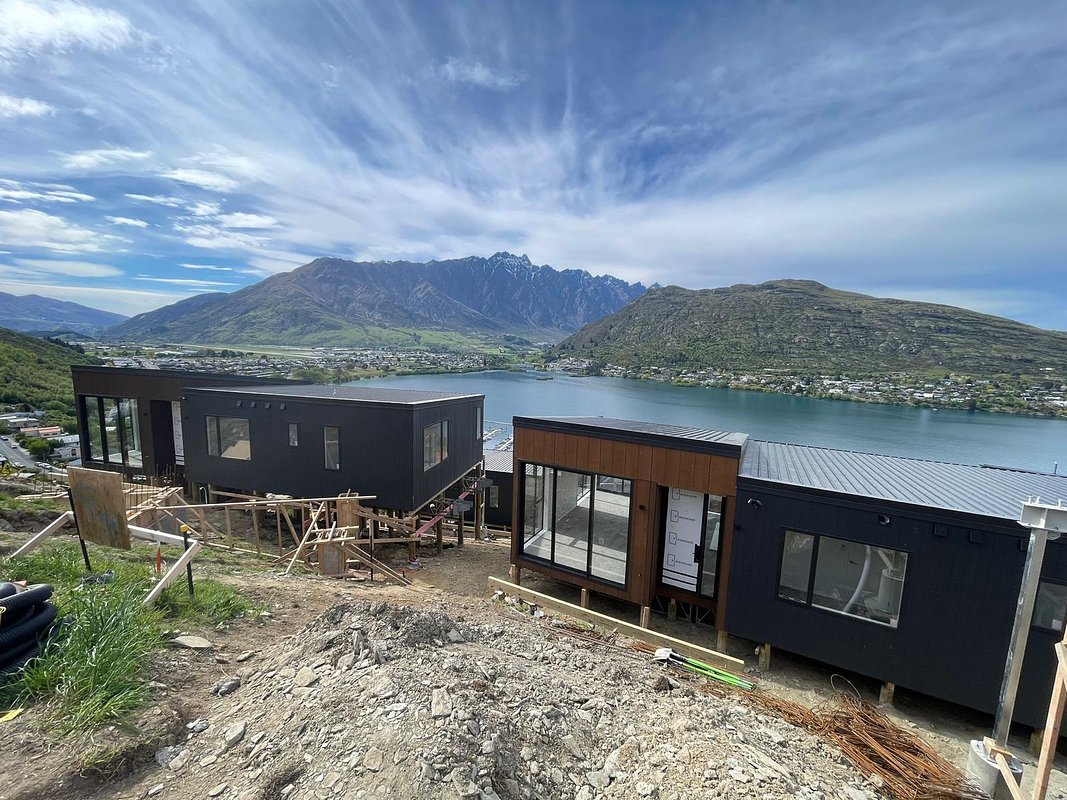
Queenstown Homes Built Off-Site: Modular Construction Gains Luxury Traction
A Queenstown developer is pioneering a new approach to luxury housing, building homes in a factory and shipping them to the site. Is this the future of high-end construction in New Zealand?
Queenstown Homes Built Off-Site: Modular Construction Gains Luxury Traction
Queenstown, New Zealand – A pioneering approach to luxury home building is gaining momentum in Queenstown, with developer James Clarke Property completing a unique residential project utilizing off-site, modular construction. The company recently ‘landed’ four high-end homes, built entirely in a Christchurch factory, onto prepared foundations in the prestigious resort town, demonstrating a potential shift in how luxury residences are delivered in New Zealand.
Traditionally, luxury homes are built entirely on-site, a process often hampered by weather delays, labor shortages, and rising material costs. James Clarke Property’s recent project bypasses these challenges by fabricating the homes in a controlled factory environment, simultaneously preparing the foundations in Queenstown. This ‘dual-track’ approach significantly condensed the build timeline and minimized disruptions – a strategy that could reshape the high-end construction landscape.
“The goal wasn't just to build homes, but to redefine the building process,” a source close to the project explained. “By moving construction indoors, we could ensure consistent quality, mitigate weather-related delays, and maintain strict quality control throughout the build.”
Beyond Affordability: Modular Moves Upmarket
Modular construction has long been associated with affordable housing solutions, but the Queenstown project proves its viability – and aesthetic potential – in the luxury segment. This isn’t simply about cost-cutting; it’s about precision, efficiency, and sustainability. Each module is constructed with exacting standards in a factory setting, offering benefits in terms of material waste reduction and overall build quality.
“There’s a misconception that prefabrication means a compromise on design or quality,” commented an industry observer. “But what we're seeing now is a sophisticated application of modular technology that allows for complex architectural designs and high-end finishes.”
The Queenstown project is part of a growing trend in New Zealand, with the Ministry of Business, Innovation and Employment (MBIE) recognizing off-site fabrication as a key driver of efficiency and sustainability in the construction sector. While comprehensive statistics on the exact market share of modular construction are difficult to come by, experts note a rising interest among developers seeking innovative solutions to pressing industry challenges.
Queenstown: A Market Ripe for Innovation
The choice of Queenstown as the location for this pioneering project is no coincidence. The resort town is renowned for its high property values, constrained land availability, and strong demand for luxury residences. The inherent challenges of building in such a geographically complex environment make off-site construction particularly appealing.
“Queenstown presents a unique set of logistical hurdles,” explained a local real estate professional. “Transporting materials, managing on-site labor, and dealing with unpredictable weather can all add significant costs and delays to traditional construction projects. The modular approach offers a way to overcome these challenges.”
Property values in Queenstown currently hover around NZ$2.1 million, sustained by both domestic and international demand. This high-value market requires a focus on quality, precision, and efficiency – all of which are inherent benefits of modular construction.
Beyond the Build: Sustainability and Industry Impact
The benefits of modular construction extend beyond cost savings and efficiency. The controlled factory environment minimizes material waste, reduces the carbon footprint of the construction process, and promotes sustainable building practices. This aligns with a growing consumer demand for eco-friendly homes and responsible development.
“Consumers are increasingly aware of the environmental impact of their choices,” noted an analyst specializing in sustainable building. “They’re looking for homes that are not only beautiful and well-built but also environmentally responsible.”
James Clarke Property’s commitment to modular construction could have a ripple effect on the wider construction industry, encouraging other developers to explore innovative building methods and embrace sustainable practices.
The company has already announced plans to build three additional residential developments using the same modular approach, signaling a long-term commitment to this innovative building technology. This expansion suggests a belief that modular construction is not a fleeting trend but a fundamental shift in how homes are designed, built, and delivered.
“We’re not just building homes; we’re building the future of construction,” a source close to the company stated. “We believe that modular construction has the potential to transform the industry and create a more sustainable, efficient, and innovative building landscape.”
The Queenstown project serves as a compelling case study for the potential of modular construction in the luxury segment, demonstrating that innovative building methods can deliver both aesthetic excellence and environmental responsibility. As demand for sustainable and efficient building solutions continues to grow, modular construction is poised to play an increasingly important role in shaping the future of the construction industry in New Zealand and beyond.
While challenges remain – including the need for specialized manufacturing facilities and transportation logistics – the benefits of modular construction are becoming increasingly clear. As developers and builders embrace this innovative technology, we can expect to see a more sustainable, efficient, and innovative building landscape emerge – one that prioritizes both quality and environmental responsibility.
📝 This article is still being updated
Are you a relevant expert who could contribute your opinion or insights to this article? We'd love to hear from you. We will give you full credit for your contribution.
Contribute Your Expertise →